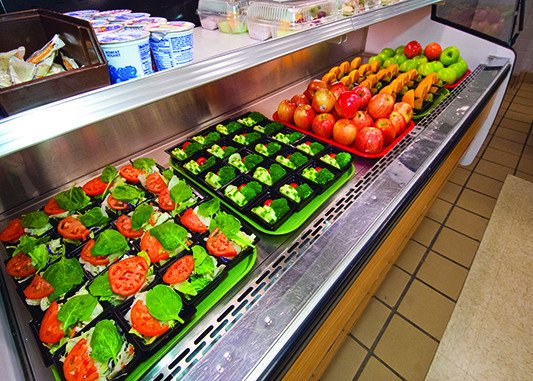Fighting Childhood Obesity with Better Marketing
CORNELL UNIVERSITY
PROBLEM
Childhood obesity has more than doubled in children and quadrupled in adolescents in the past 30 years.
SOLUTION
Deploying marketing strategies used to generate impulse purchases can encourage kids to eat better at school while cutting cost and waste.
FUNDING
USDA Agriculture and Food Research Initiative
USDA Economic Research Service
RESEARCHERS
David Just, PhD, Cornell University
Marketers have mastered the art of generating impulse purchases at grocery stores. Customers waiting in line find tantalizing candy and other treats within their reach.
Dr. David Just is applying these principles to school cafeteria lines. To entice children to eat more fruit, produce is removed from the “servings” area and placed by the cash register. While waiting in line, students were more likely to grab an apple. This simple approach more than doubles their fruit consumption.
In another example, researchers set white milk in front of chocolate milk. When kids have to reach three more inches for chocolate, an additional one-quarter of kids take the lower-calorie option. Even rebranding mundane items can make a big difference. When foods become “X-ray Vision Carrots” and “The Big Bad Bean Burrito,” school vegetable sales nearly double.
These approaches are more effective than having cafeteria workers place healthy foods on the kids’ trays, or other methods where kids play a passive role. Making it easier and more fun
“Behavioral science doesn’t just work for unhealthy foods; the same tools can be used to get kids to make healthy choices.”

